I’m pretty sure that I don’t have to describe to you what blackberries look like, as they are the quintessential foraging food. Ever since I was a kid I have been collecting wild blackberries from mid to late summer. I remember my little sister and I would start checking the local blackberry patch in late July, keeping a close watch as they started to ripen. Once they were ready, Mom would give us colanders to collect them in so that they could be easily washed once we came home. It was always fun when our older siblings came to pick with us as they could reach the best berries, although we always brought a step stool with us as well. We would be there for hours, sometimes for multiple days in a row, just to collect enough blackberries so that Mom could make cobbler. This was our whole motivation, beyond the handfuls of blackberries that we ate while picking. Foraging for blackberries is the gateway to all sorts of wild food harvesting!
Wildcrafting Weeds
If you want to learn more about the edible and medicinal weeds that surround us and how to use them, check out my eBook: Wildcrafting Weeds: 20 Easy to Forage Edible and Medicinal Plants (that might be growing in your backyard)!
Gather & Root Online Foraging Course
My online foraging course is a great way to learn about wild edible and medicinal plants! Sign up to join the waiting list for the gather + root online foraging course here so that you are the first to know when it opens for enrollment.
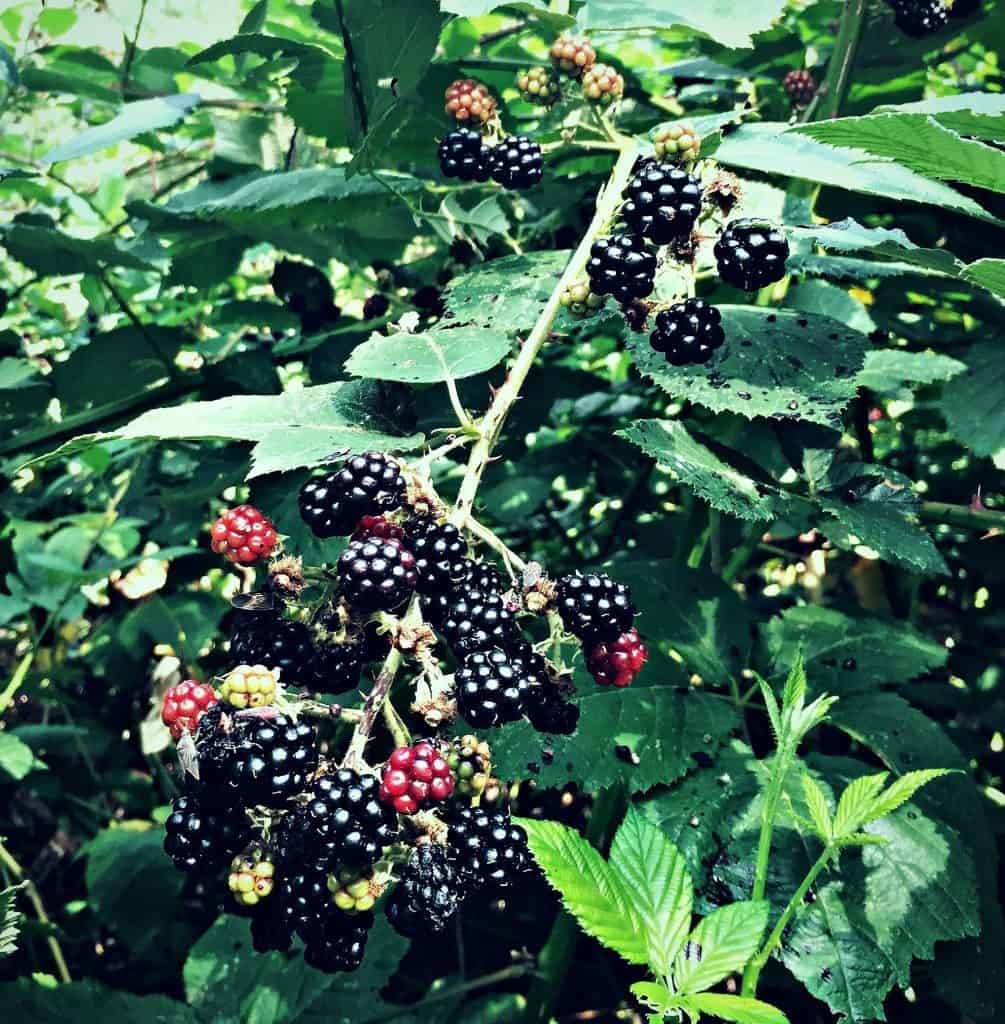
The other main species is the Cutleaf Evergreen Blackberry, Rubus laciniatus, which is native to Europe and has been introduced into North America. It has a different leaf shape than the Himalayan and its berries seem to take longer to ripen, at least around here. They are still red at the time of writing this, so I will keep you posted when I harvest them as they are supposed to have an excellent tasting berry.
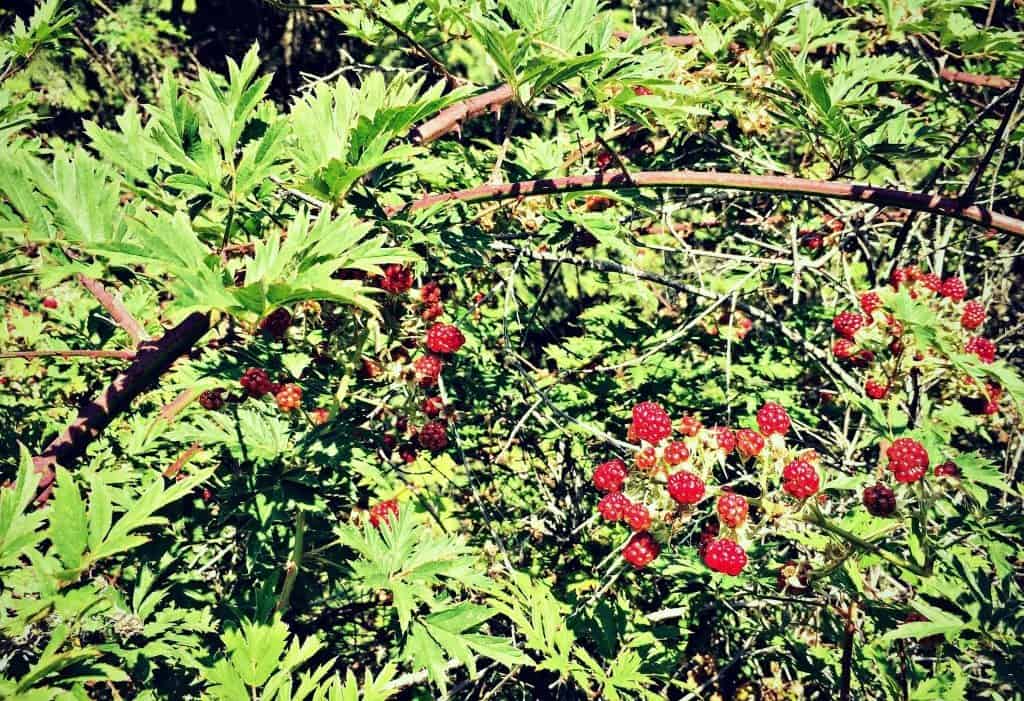
I’m going to pause for a quick moment here to tell you about my opinion on “invasive” species and non native “weeds,” and this might surprise (and possibly irritate) some of you. Since learning about permaculture, I have come to the state of mind that plants are plants of this earth, just like people are people of this earth. So why do we try and eradicate and spray them, especially plants that give us food and medicine? We will never, ever get rid of blackberry brambles no matter how hard we try and how much poison we spray on them, so we should probably just accept them for what they are and the benefits they give to us. I actually plan on doing a whole post on my opinion on this subject in the near future, so watch out for that!
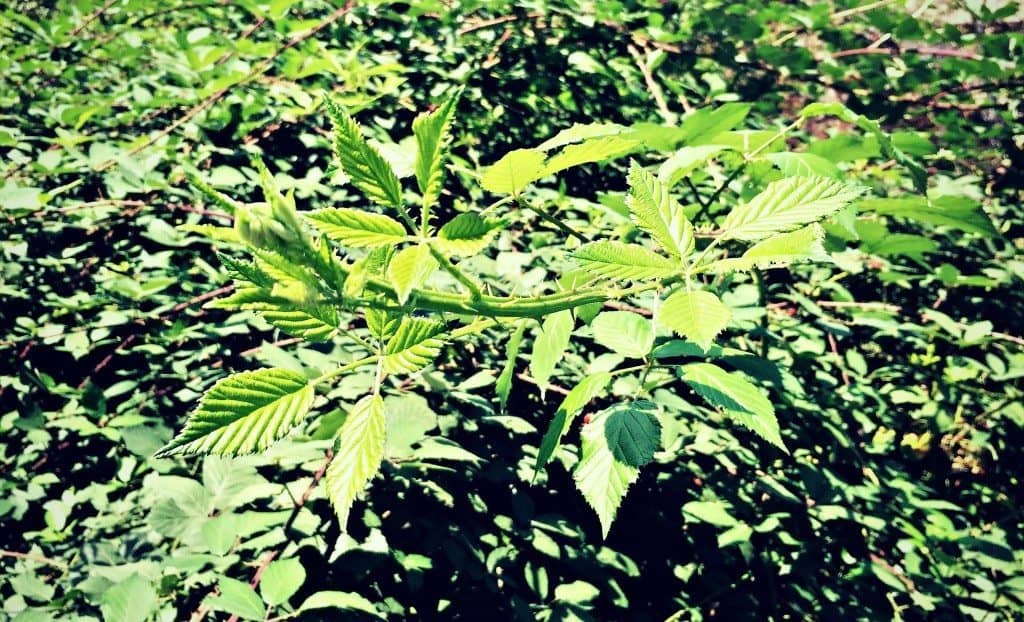
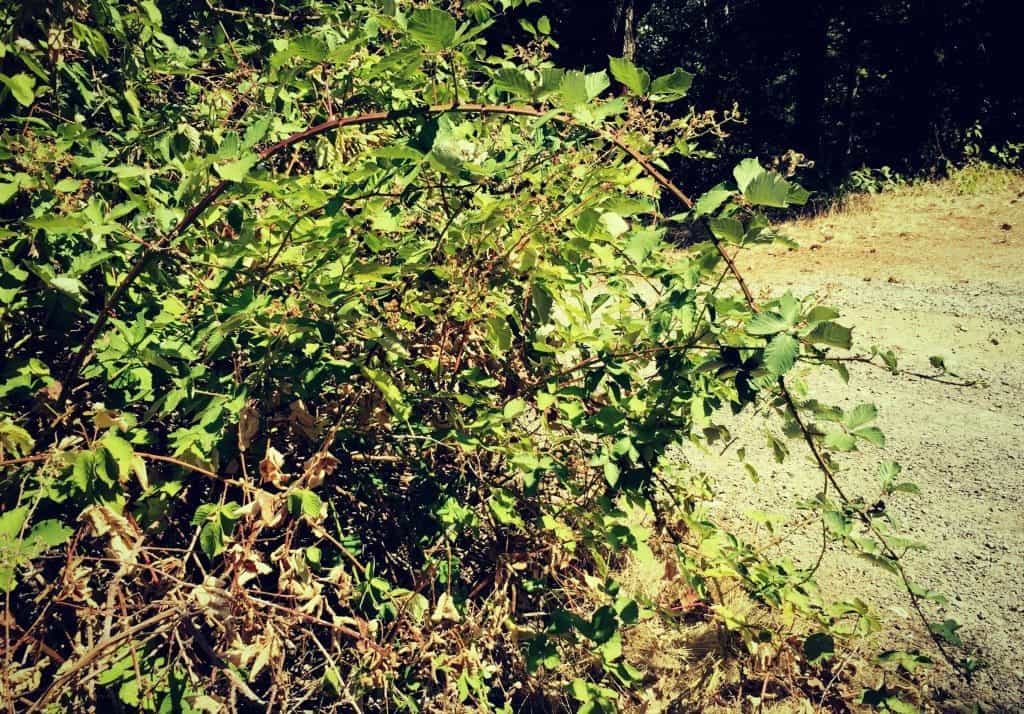
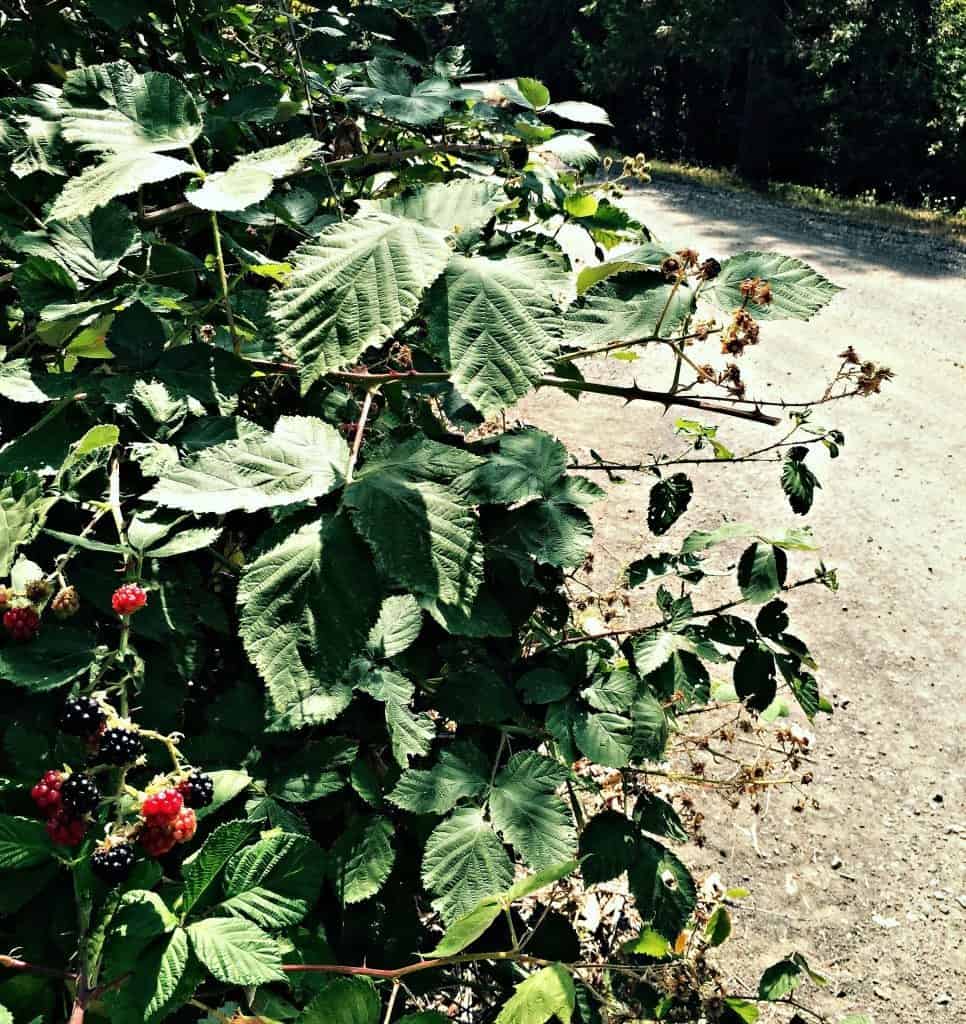
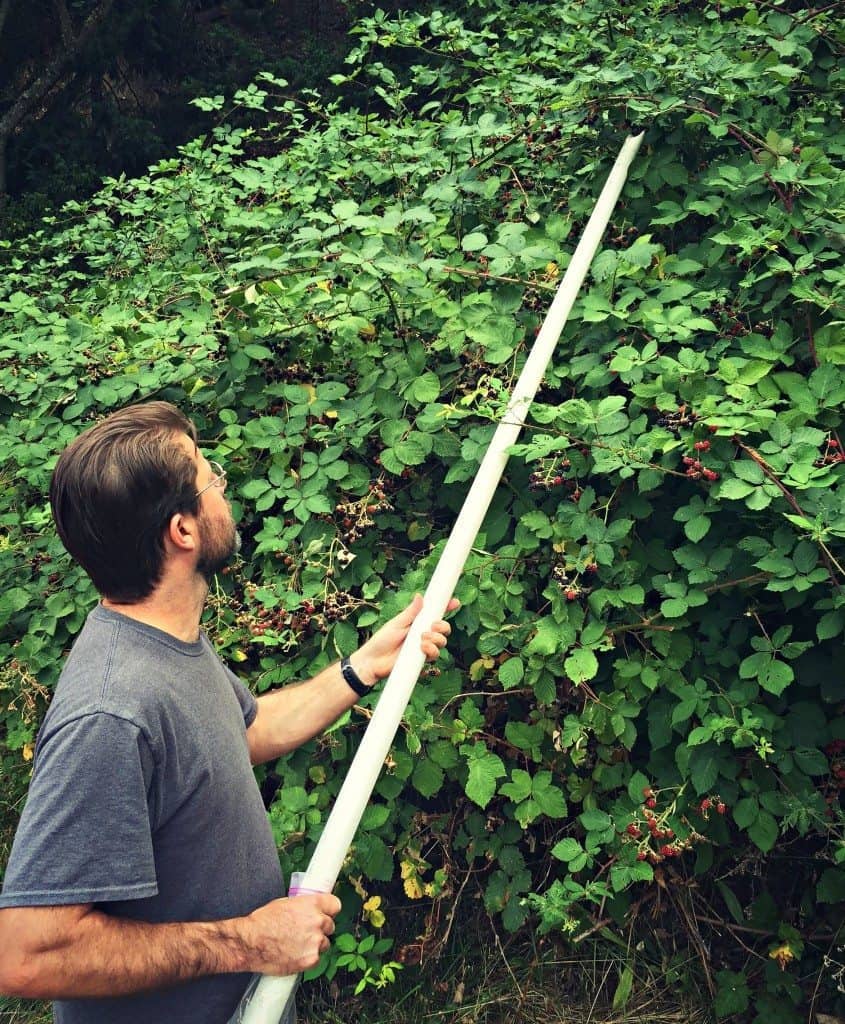
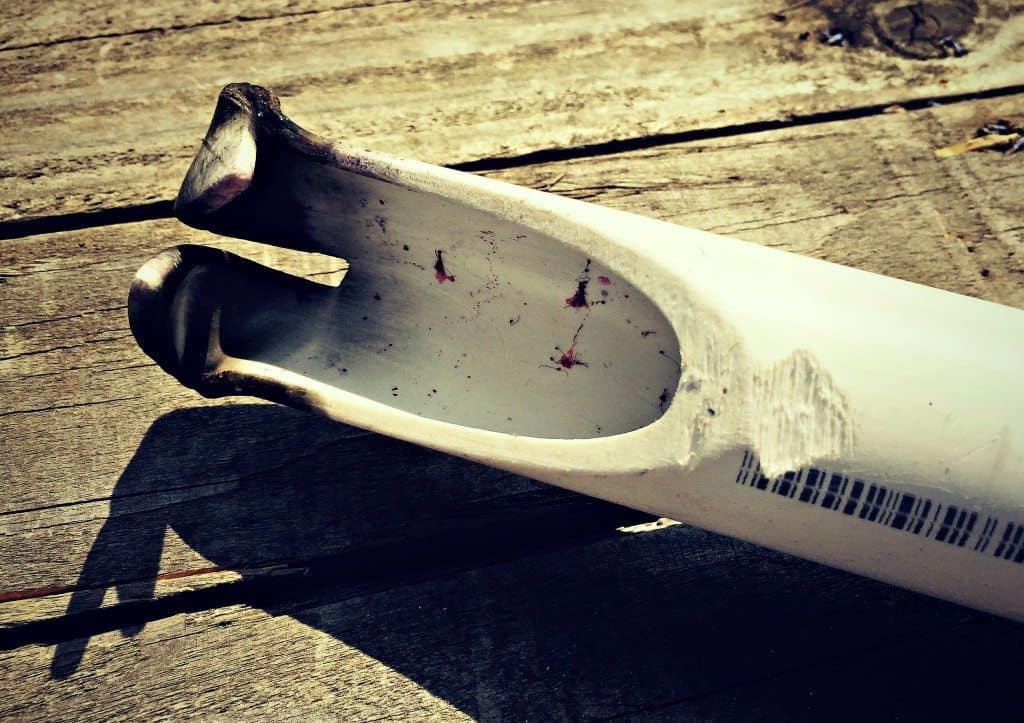
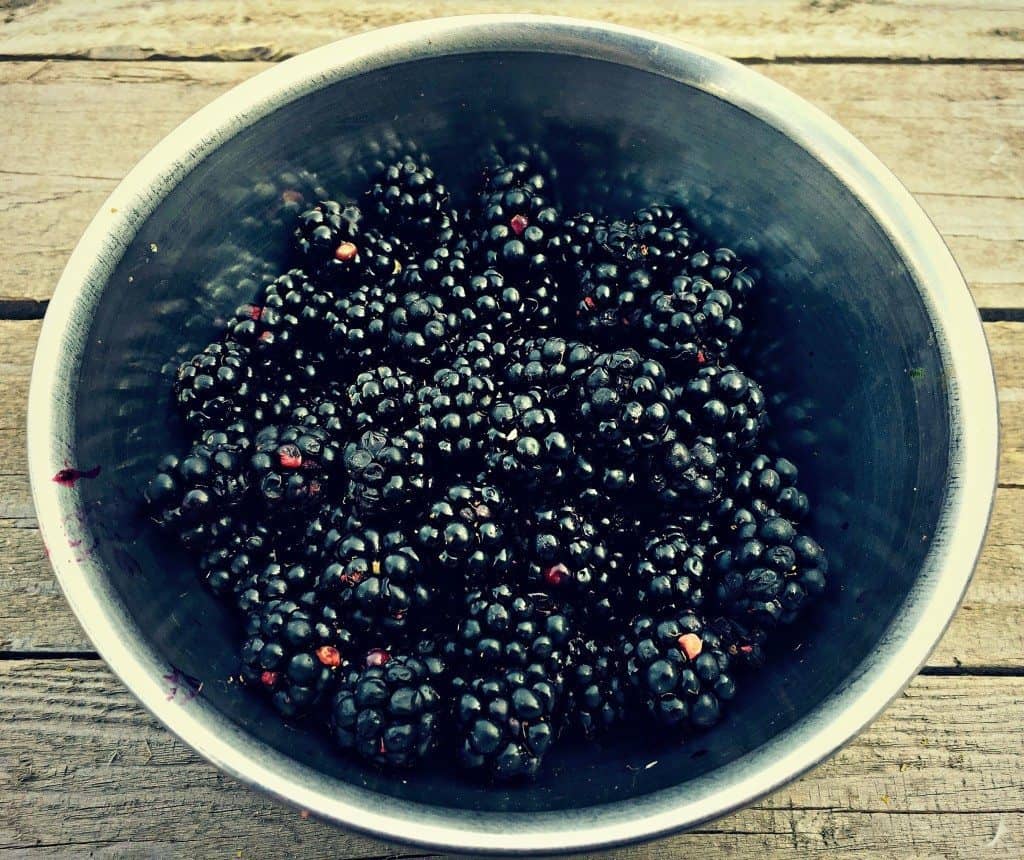
If you don’t have any blackberry leaves to forage, or if it’s the wrong time of year, you can always buy dried blackberry leaves from Mountain Rose Herbs (my favorite place to buy high quality, organic herbs).
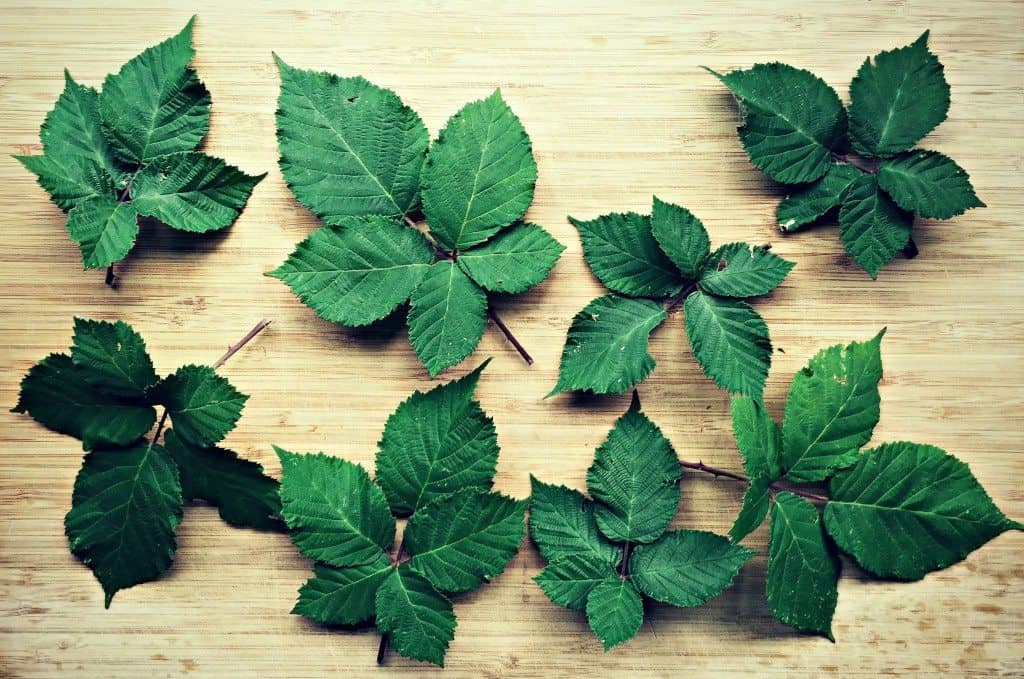
Learn More about Foraging and Using Blackberries
Here are some more posts for further reading on blackberries:
- How to Build a Trellis for Blackberries and Blackberry Jam from One Acre Vintage Homestead
- One Gallon of Blackberry Mead and Blackberry Cordial & Simple Syrup from Pixie’s Pocket
- Foraging for Dewberries from Vermont Mango Plantation
- Fresh Blackberry Cobbler from Better Hens and Gardens
- Blackberry Banana Ice Cream from One Acre Farm
- Blackberry Syrup from One Ash Farm and Dairy Homestead
- Blackberry Mead a Grow, Forage, Cook, Ferment recipe
- Peach & Blackberry Cobbler a Grow, Forage, Cook, Ferment recipe
- Skillet Pear & Blackberry Crisp a Grow, Forage, Cook, Ferment recipe
Hope you have fun foraging for blackberries!


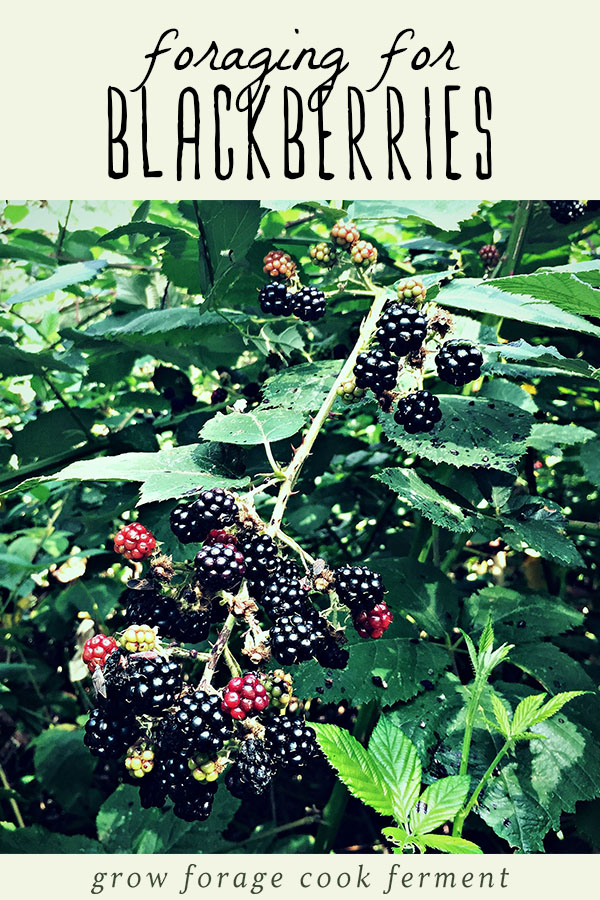

That picker is brilliant!
I’m completely on board with what you are saying about the nativist arguments! Nature should not be demonized and plants have always been carried around the world. Only now that trend is accelerated with global travel. There is never an excuse to use herbicides or any kind of poisons. I refrain from ever calling wild plants weeds. We should not vilify them but learn their good properties. Eventually Mother Nature will heal herself of imbalances and nature knows best.